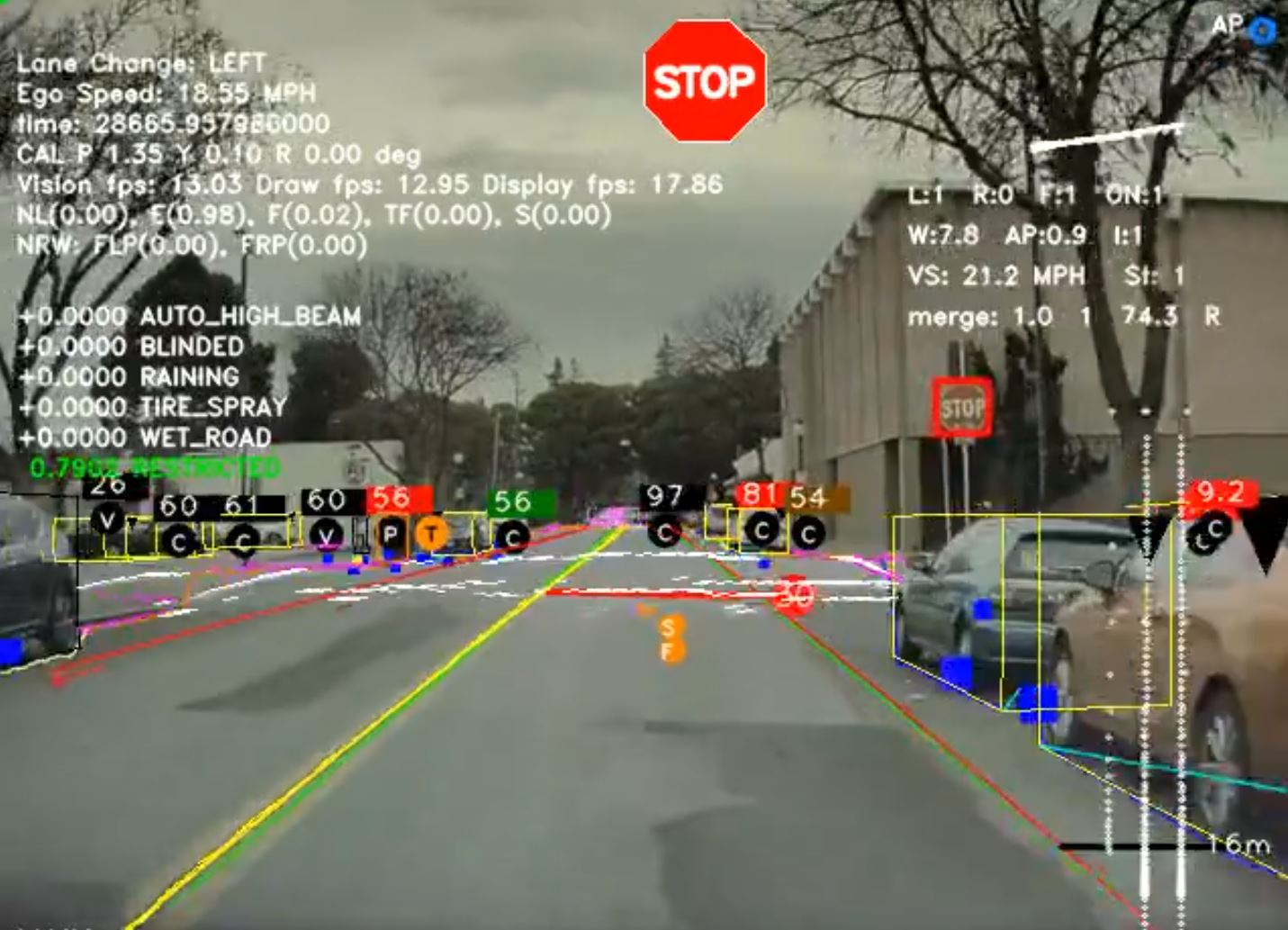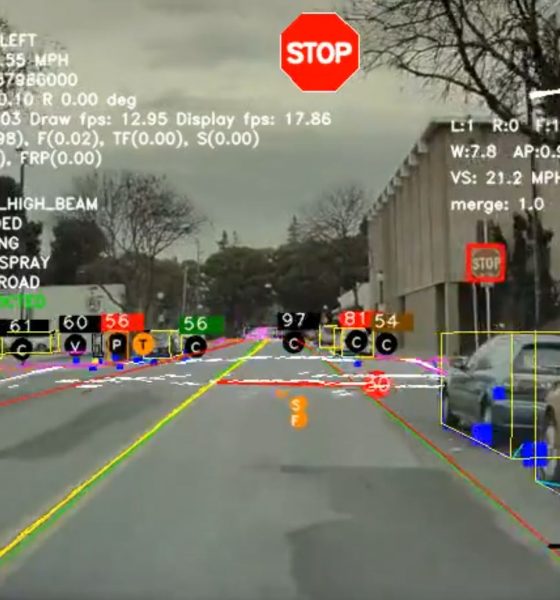

News
Tesla 3D labeling is the next big leap for Autopilot
Tesla’s 3D labeling efforts are integral to the development of its Full Self-Driving suite. Using over 2.2 billion miles of real-world driving data from its electric vehicle fleet, the electric car maker has a treasure trove of information about how human drivers behave.
Elon Musk recently confirmed that Tesla is finishing work on Autopilot core foundation code and 3D labeling, and once these are done, users can expect the electric carmaker to roll out more functionalities in a potentially more efficient manner. More advanced features such as Reverse Summon will also be rolled out.
Tesla 3D Labeling: The Next Big Thing
The Tesla CEO has tagged 3D labeling as the next big thing for the company’s efforts to achieve full self-driving. “In terms of labeling, labeling with video in all eight cameras simultaneously. This is a really, I mean in terms of labeling efficiency, arguably like a three order of magnitude improvement in labeling efficiency where Tesla vehicles use all of its eight cameras simultaneously, and that the company has improved significantly in terms of labeling efficiency,” Musk said during the Q4 2019 earnings call.
During Autonomy Day last year, Tesla’s AI head Andrej Karpathy gave the electric vehicle community an idea of how labeling is done. He said annotating data is a very expensive process that initially involved people processing data, but Tesla has also been using information from its fleet to automate the process of labeling using different mechanisms.
For example, in predicting cut-ins, Tesla taps into its fleet for data on such incidents. This information is then automatically annotated and used to train the neural network, which in turn learns from recognizable patterns. This information is then spun until the neural network is trained enough. Improvements in the neural network can then be rolled out as an update for Autopilot.
The same is true according to Karpathy when it comes to object detection. Tesla sources data from its fleet to learn more about different objects and anomalies on the road. With automated 3D labeling, the neural network can more efficiently process the information and learn even about the rarest things one can encounter on the road.
Karpathy and Musk explained how annotations from its fleet help with path prediction. Using trajectories collected from the real-world, the neural network can improve its driving behavior, say while approaching a corner that it doesn’t actively see. This smarter neural network is perfectly demonstrated by an older Model X with early-gen Autopilot negotiating a muddy rural backroad recently, after a storm in the United Kingdom.
All of these things form part of the equation to achieve Full Self-Driving capabilities. Likely through 3D labeling improvements in the past year or so, Tesla has immensely improved driving visualizations in vehicles equipped with Hardware 3, which now identify traffic lights, garbage cans, and detailed road markings, among others. Thus, Elon Musk’s explanation about rewriting the Autopilot foundational code and 3D labeling could be a way of emphasizing that Tesla owners’ investment in the company’s Full Self-Driving suite would be proven worth it and more soon.
Tesla’s FSD computer and autonomy software will transform how humans travel. The company’s vehicles will be smart enough to drive like humans and eventually make the roads a few times safer for everyone. This may also pave the way for Robotaxis and help achieve Musk’s vision of Teslas earning for their owners while they are busy with work or even while relaxing at home. Tesla Robotaxis would be an attractive form of transportation as they will be more cost-efficient compared to driving personal cars, as predicted by ARK Invest.
Autonomy As Key To Profitability
Autonomy will spell profits for Tesla, as Elon Musk explained during the company’s Q4 2019 earnings call. In order to achieve sustained profitability, Tesla needs to produce high volume units with high margins. Musk appears to consider autonomy as key to Tesla’s high margins as well.
“As we’re close to Full Self-Driving, that is just going to become more and more compelling. So that’s for our financial standpoint, that’s the real mind-blowing situation is high-volume, high-margin because of autonomy,” Musk said.
With FSD capabilities, Tesla adds more value proposition that can help sway even more customers to purchase its electric vehicles from the Model 3, Model Y, Model S, Model X, or the Cybertruck. Depending on regulations in specific regions, Tesla can tap into most of its earnings potential, which bodes well since the company has current plans to expand its presence worldwide with Gigafactories in multiple regions.
Tesla’s path to autonomy is only one of the aspects that make it the leader in the electric vehicle industry. Add to that its advancements on car connectivity and battery technology and one will complete the equation why legacy carmakers with the deepest of pockets can only watch in amazement as a relatively young electric car maker dominates the emerging EV industry.

Elon Musk
Elon Musk’s X will start using a Tesla-like software update strategy
The initiative seems designed to accelerate updates to the social media platform, while maintaining maximum transparency.

Elon Musk’s social media platform X will adopt a Tesla-esque approach to software updates for its algorithm.
The initiative seems designed to accelerate updates to the social media platform, while maintaining maximum transparency.
X’s updates to its updates
As per Musk in a post on X, the social media company will be making a new algorithm to determine what organic and advertising posts are recommended to users. These updates would then be repeated every four weeks.
“We will make the new 𝕏 algorithm, including all code used to determine what organic and advertising posts are recommended to users, open source in 7 days. This will be repeated every 4 weeks, with comprehensive developer notes, to help you understand what changed,” Musk wrote in his post.
The initiative somewhat mirrors Tesla’s over-the-air update model, where vehicle software is regularly refined and pushed to users with detailed release notes. This should allow users to better understand the details of X’s every update and foster a healthy feedback loop for the social media platform.
xAI and X
X, formerly Twitter, has been acquired by Elon Musk’s artificial intelligence startup, xAI last year. Since then, xAI has seen a rapid rise in valuation. Following the company’s the company’s upsized $20 billion Series E funding round, estimates now suggest that xAI is worth tens about $230 to $235 billion. That’s several times larger than Tesla when Elon Musk received his controversial 2018 CEO Performance Award.
As per xAI, the Series E funding round attracted a diverse group of investors, including Valor Equity Partners, Stepstone Group, Fidelity Management & Research Company, Qatar Investment Authority, MGX, and Baron Capital Group, among others. Strategic partners NVIDIA and Cisco Investments also continued support for building the world’s largest GPU clusters.
News
Tesla FSD Supervised wins MotorTrend’s Best Driver Assistance Award
The decision marks a notable reversal for the publication from prior years, with judges citing major real-world improvements that pushed Tesla’s latest FSD software ahead of every competing ADAS system.

Tesla’s Full Self-Driving (Supervised) system has been named the best driver-assistance technology on the market, earning top honors at the 2026 MotorTrend Best Tech Awards.
The decision marks a notable reversal for the publication from prior years, with judges citing major real-world improvements that pushed Tesla’s latest FSD software ahead of every competing ADAS system. And it wasn’t even close.
MotorTrend reverses course
MotorTrend awarded Tesla FSD (Supervised) its 2026 Best Tech Driver Assistance title after extensive testing of the latest v14 software. The publication acknowledged that it had previously criticized earlier versions of FSD for erratic behavior and near-miss incidents, ultimately favoring rivals such as GM’s Super Cruise in earlier evaluations.
According to MotorTrend, the newest iteration of FSD resolved many of those shortcomings. Testers said v14 showed far smoother behavior in complex urban scenarios, including unprotected left turns, traffic circles, emergency vehicles, and dense city streets. While the system still requires constant driver supervision, judges concluded that no other advanced driver-assistance system currently matches its breadth of capability.
Unlike rival systems that rely on combinations of cameras, radar, lidar, and mapped highways, Tesla’s FSD operates using a camera-only approach and is capable of driving on city streets, rural roads, and freeways. MotorTrend stated that pure utility, the ability to handle nearly all road types, ultimately separated FSD from competitors like Ford BlueCruise, GM Super Cruise, and BMW’s Highway Assistant.
High cost and high capability
MotorTrend also addressed FSD’s pricing, which remains significantly higher than rival systems. Tesla currently charges $8,000 for a one-time purchase or $99 per month for a subscription, compared with far lower upfront and subscription costs from other automakers. The publication noted that the premium is justified given FSD’s unmatched scope and continuous software evolution.
Safety remained a central focus of the evaluation. While testers reported collision-free operation over thousands of miles, they noted ongoing concerns around FSD’s configurable driving modes, including options that allow aggressive driving and speeds beyond posted limits. MotorTrend emphasized that, like all Level 2 systems, FSD still depends on a fully attentive human driver at all times.
Despite those caveats, the publication concluded that Tesla’s rapid software progress fundamentally reshaped the competitive landscape. For drivers seeking the most capable hands-on driver-assistance system available today, MotorTrend concluded Tesla FSD (Supervised) now stands alone at the top.
News
Elon Musk’s Grokipedia surges to 5.6M articles, almost 79% of English Wikipedia
The explosive growth marks a major milestone for the AI-powered online encyclopedia, which was launched by Elon Musk’s xAI just months ago.

Elon Musk’s Grokipedia has grown to an impressive 5,615,201 articles as of today, closing in on 79% of the English Wikipedia’s current total of 7,119,376 articles.
The explosive growth marks a major milestone for the AI-powered online encyclopedia, which was launched by Elon Musk’s xAI just months ago. Needless to say, it would only be a matter of time before Grokipedia exceeds English Wikipedia in sheer volume.
Grokipedia’s rapid growth
xAI’s vision for Grokipedia emphasizes neutrality, while Grok’s reasoning capabilities allow for fast drafting and fact-checking. When Elon Musk announced the initiative in late September 2025, he noted that Grokipedia would be an improvement to Wikipedia because it would be designed to avoid bias.
At the time, Musk noted that Grokipedia “is a necessary step towards the xAI goal of understanding the Universe.”
Grokipedia was launched in late October, and while xAI was careful to list it only as Version 0.1 at the time, the online encyclopedia immediately earned praise. Wikipedia co-founder Larry Sanger highlighted the project’s innovative approach, noting how it leverages AI to fill knowledge gaps and enable rapid updates. Netizens also observed how Grokipedia tends to present articles in a more objective manner compared to Wikipedia, which is edited by humans.
Elon Musk’s ambitious plans
With 5,615,201 total articles, Grokipedia has now grown to almost 79% of English Wikipedia’s article base. This is incredibly quick, though Grokipedia remains text-only for now. xAI, for its part, has now updated the online encyclopedia’s iteration to v0.2.
Elon Musk has shared bold ideas for Grokipedia, including sending a record of the entire knowledge base to space as part of xAI’s mission to preserve and expand human understanding. At some point, Musk stated that Grokipedia will be renamed to Encyclopedia Galactica, and it will be sent to the cosmos.
“When Grokipedia is good enough (long way to go), we will change the name to Encyclopedia Galactica. It will be an open source distillation of all knowledge, including audio, images and video. Join xAI to help build the sci-fi version of the Library of Alexandria!” Musk wrote, adding in a later post that “Copies will be etched in stone and sent to the Moon, Mars and beyond. This time, it will not be lost.”








